If you think of carnivorous plants, you probably think of the Amazon rainforest, but you can enjoy some incredible carnivorous plants in your own plot.
What’s a carnivorous plant?
For a plant to be considered carnivorous, it needs to source its food from living things. Yes, just as many of us are meat eaters, so are some plants.
Though they still gather most of their energy from the sun, these plants have adapted to grow in areas where there is a rich supply of animals, protozoans, insects and arthropods to consume.
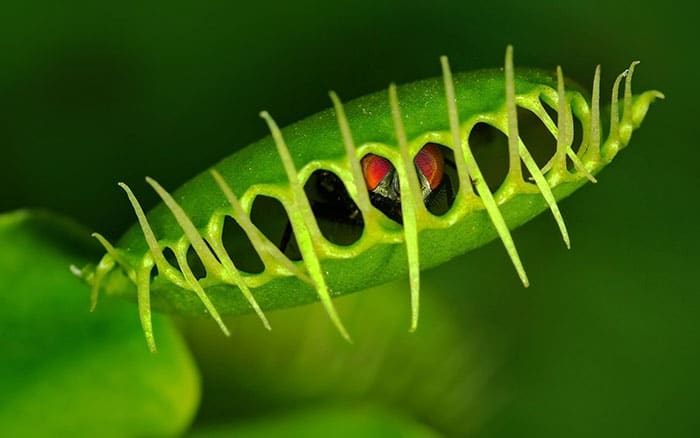
They do this in many different ways, but mainly through trapping the living organisms and extracting the nutrients from them and this is accomplished through food collection mechanisms such as traps, pitchers, sticky pads or suction techniques.
This inventive way of surviving occurs when the plant’s natural environment doesn’t supply what they need.
Carnivorous plant care
Carnivorous plants come from a wide range of climates right from Asia and Australia, to areas as diverse as Mexico and Alaska. This means that their requirements can vary widely too. As they bolster their own diets with living organisms, feeding is rarely necessary.
The most important consideration with owning these plants is the moisture and humidity levels.
Firstly, you want to avoid tap water wherever possible because it contains high levels of calcium which can make the soil too alkaline. Rainwater is best suited to most, so collect it if you can.
Throughout the growing season, they can be watered from below to give them the best results. But, during the winter, ensure that they’re never left sat in water as their roots can rot.
One way to deal with this whilst providing a humid atmosphere is to fill at tray with pebbles and to keep the water level below the height of the pebbles. Then, when you sit the pot onto the tray, it will create a humid environment without soaking the plant.
Crazy cultivars
Kids absolutely love the idea of an insect munching plant. Having a weird and wonderful plant like this really teaches them about the wonder of the natural world and is a great way to get them enthused about plants.
Additionally, exotic plants like this really add interest inside and outside the home. You can add them as miniature curios to windowsills, greenhouses, or containers outdoors and they’re a great talking piece.
So, here are my top three carnivorous plants to try in or out of your home:
Dionaea muscipula (Venus fly trap)
Venus fly traps are the most commonly heard of carnivorous plant. They are great for homes that attract lots of flies.
This evergreen has stalks ending in a hinger trap which snaps closed when flies land on it. Each trap can be used several times before it dies back and is replaced. The plant will also bear white flowers in spring—ideal for a kitchen windowsill.
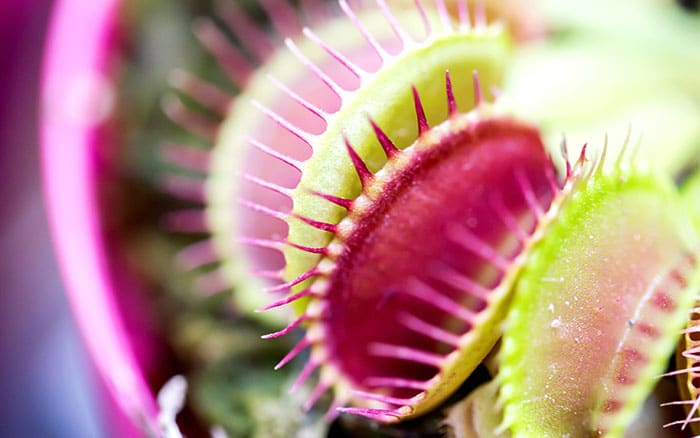
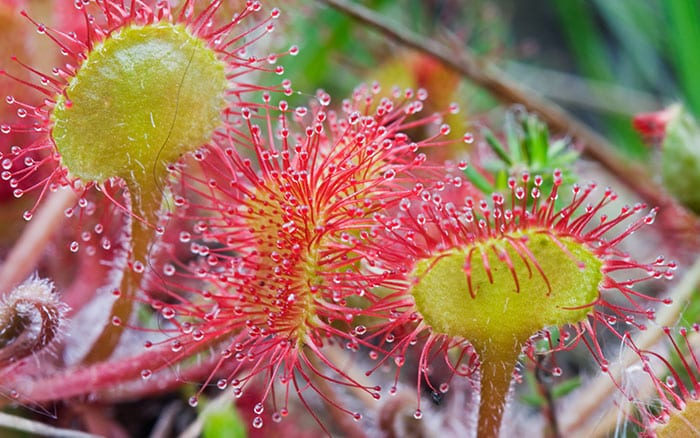
Drosera rotundifolia
Next is a British-native sundew, meaning it has sticky hairs on the leaves that catch their prey. This can be planted out in containers on your patio as long as there is good light, but not direct sunshine.
These eye-catching plants, with their red-tipped rosettes, can live up to 50 years. So, that’s quite a return on investment. Plus, small white-pink flowers appear in summer to offer more than just insect-eating effects.
Pitcher plants
Finally, these have a jug-like growth which collect bugs to eat. Californian pitcher plants have pitcher-like hooded appendages on top of great stalks which are quite unusual, like something out of a sci-fi movie.
For a hardy pitcher plant, look for Sarracenia purpurea which will fare well down to -20 in most parts of the UK. It has strikingly beautiful purple pitchers and can also be grown in containers outside in the garden with a moss peat to stow it in good stead.
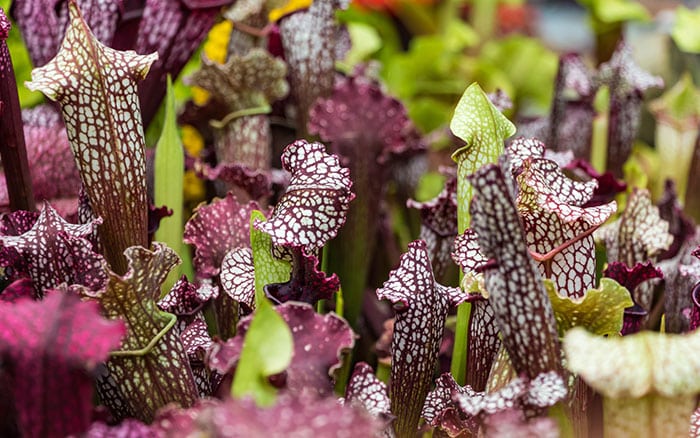
Without a doubt, carnivorous plants can add a new exciting dynamic to growing plants and they hold a well of wonder for the kids too. So, why not try an insect-devouring plant and see how delightful they can be?
David Domoney is a Chartered Horticulturalist, Broadcaster, and Author. David has worked with a number of the UK’s leading garden retailers as a plant buyer and strategic consultant. With more than 30 years experience, in horticulture, David is as passionate about plants now as he was when he bought his first plant at a village fete.

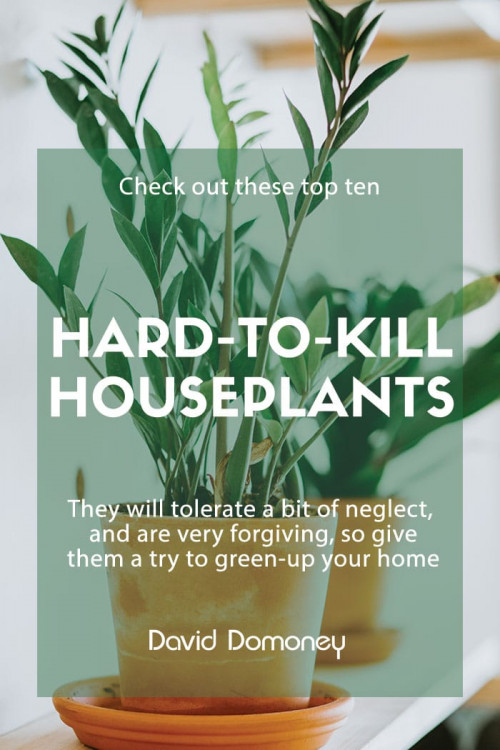





Leave A Comment